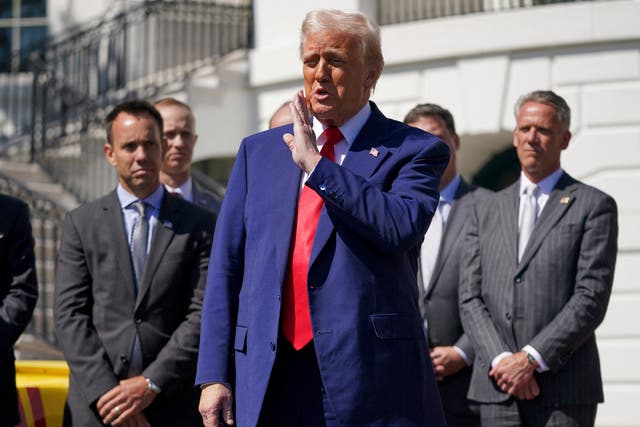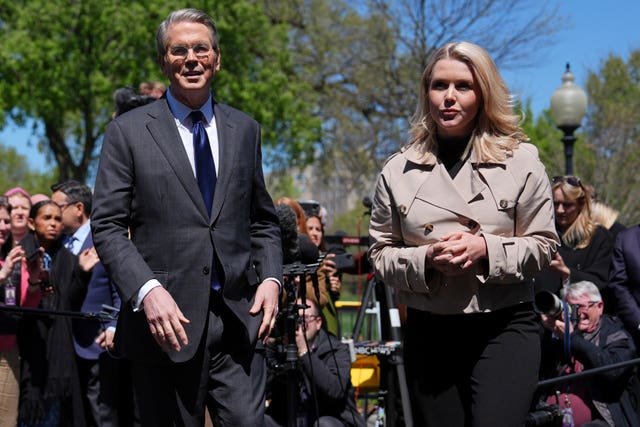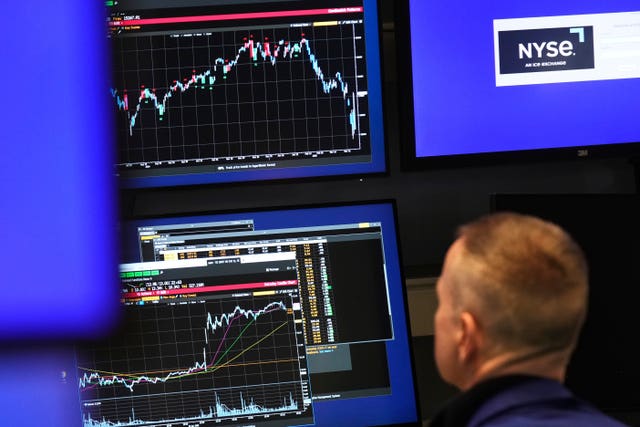Trump limits tariffs on most nations for 90 days but raises them for China
The US president hit pause in the face of intense pressure created by volatile financial markets that had been pushing him to change strategy.

Facing a global market meltdown, US President Donald Trump has abruptly backed off his tariffs on most nations for 90 days even as he further increased the tax rate on Chinese imports to 125%.
It was seemingly an attempt to narrow what had been an unprecedented trade war between the US and most of the world to a showdown between the US and China.
The S&P 500 stock index jumped 9.5% after the announcement, but the drama over Mr Trump’s tariffs is far from over as his administration prepares to engage in country-by-country negotiations. In the meantime, countries subject to the pause will now be tariffed at 10%.
The president hit pause in the face of intense pressure created by volatile financial markets that had been pushing Mr Trump to reconsider his tariffs, even as some administration officials insisted his reversal had always been the plan.
As stocks and bonds sold off, voters were watching their retirement savings dwindle and businesses warned of worse than expected sales and rising prices, all a possible blow to a country that sent Mr Trump back to the White House last year on the promise of combatting inflation.

The global economy appeared to be in open rebellion against Mr Trump’s tariffs as they took effect early on Wednesday, a signal that the US president was not immune from market pressures. By early afternoon, Mr Trump posted on Truth Social that because more than 75 countries had reached out to the US government for trade talks and had not retaliated in meaningful ways he had authorised a 90-day pause and a lowered “reciprocal tariff” of 10% “effective immediately”.
Mr Trump later told reporters that he pulled back on many global tariffs – but not on China – because people were “yippy” and “afraid” because of the stock market declines. He added that while he expected to reach deals, “nothing’s over yet”.
The president said he had been monitoring the bond market and that people were “getting a little queasy” as bond prices had fallen and interest rates had increased in a vote of no confidence by investors in Mr Trump’s previous tariff plans.
“The bond market is very tricky,” Mr Trump said. “I was watching it. But if you look at it now, it’s beautiful.”
The president later said he had been thinking about his tariff pause over the past few days, but he said it “came together early this morning, fairly early this morning”.
Asked why White House aides had been insisting for weeks that the tariffs were not part of a negotiation, Mr Trump said: “A lot of times, it’s not a negotiation until it is.”
The 10% tariff was the baseline rate for most nations that went into effect on Saturday. It is meaningfully lower than the 20% tariff that Mr Trump had set for goods from the European Union, 24% on imports from Japan and 25% on products from South Korea. Still, 10% represents an increase in the tariffs previously charged by the US government. Canada and Mexico would continue to be tariffed by as much as 25% because of a separate directive by Mr Trump to ostensibly stop fentanyl smuggling.
US treasury secretary Scott Bessent said that the negotiations with individual countries would be “bespoke”, meaning that the next 90 days would involve talks on a flurry of potential deals. Mr Bessent, a former hedge fund manager, told reporters that the pause was because of other countries seeking talks rather than brutal sell-offs in the financial markets, a statement later contradicted by the president.

“The only certainty we can provide is that the US is going to negotiate in good faith, and we assume that our allies will too,” Mr Bessent said.
The treasury secretary said he and Mr Trump “had a long talk on Sunday, and this was his strategy all along” and that the president had “goaded China into a bad position”.
Prior to the reversal, business executives were warning of a potential recession caused by his policies, some of the top US trading partners were retaliating with their own import taxes and the stock market was quivering after days of decline.
White House press secretary Karoline Leavitt said the walk back was part of Mr Trump’s negotiating strategy.
She said the news media “clearly failed to see what President Trump is doing here”.
“You tried to say that the rest of the world would be moved closer to China, when in fact, we’ve seen the opposite effect. The entire world is calling the United States of America, not China, because they need our markets,” she said.
The head of the World Trade Organisation, Ngozi Okonjo-Iweala, said the trade war between the US and China could “could severely damage the global economic outlook” and warned of “potential fragmentation of global trade along geopolitical lines”.
Market turmoil had been building for weeks before Mr Trump’s move, with the president at times suggesting the import taxes would stay in place while also saying that they could be subject to negotiations.

Gennadiy Goldberg, head of US rates strategy at TD Securities, said before the announcement that markets wanted to see a truce in the trade disputes.
“Markets more broadly, not just the treasury market, are looking for signs that a trade de-escalation is coming,” he said. “Absent any de-escalation, it’s going to be difficult for markets to stabilise.”
John Canavan, lead analyst at the consultancy Oxford Economics, noted that while Mr Trump said he changed course because of possible negotiations, he had previously indicated that the tariffs would stay in place.
“There have been very mixed messages on whether there would be negotiations,” Mr Canavan said. “Given what’s been going on with the markets, he realised the safest thing to do is negotiate and put things on pause.”
The rollercoaster nature of Wednesday could be seen in the social media posts of Bill Ackman, a hedge fund billionaire and Trump supporter.
“Our stock market is down,” Mr Ackman posted on X. “Bond yields are up and the dollar is declining. These are not the markers of successful policy.”
Mr Ackman repeated his call for a 90-day pause in the post. When Mr Trump embraced that idea several hours later, an ebullient Mr Ackman posted that Mr Trump had “brilliantly executed” his plan and it was “Textbook, Art of the Deal,” a reference to Mr Trump’s bestselling 1987 book.





